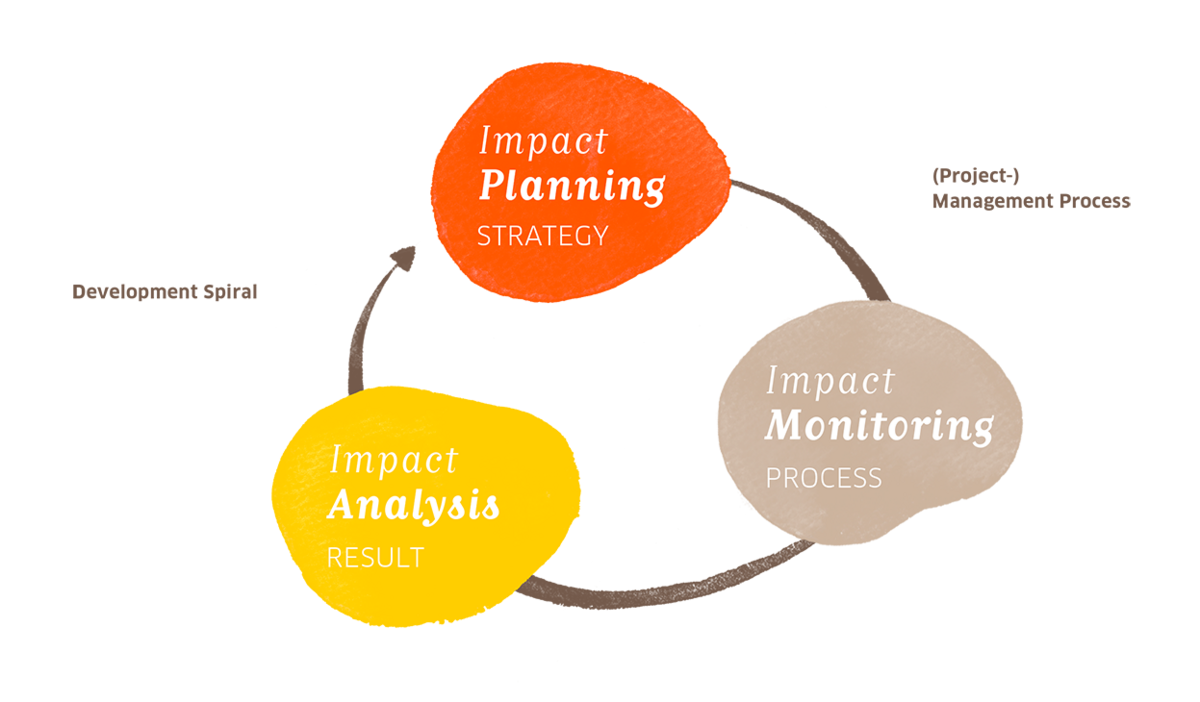Impact Planning
The goal of grantmaking foundations has always been to support the “right things,” and to support them in the right way. In light of sharpening competition regarding who can complete social tasks most efficiently and effectively, foundations are increasingly asking themselves whether their grants are having the desired impact. Under the general banner of “impact-oriented grantmaking,” a number of parties, including the Software AG Foundation (SAGST), have developed various models and approaches.
The SAGST Model of Effectiveness
In general, when we support a project, we engage in direct contact and on-site dialogue with our partners. This allows us to develop a detailed impression of the impact our support is having. A further element of our approach is to extract the best aspects of existing models and compare them with our own processes – developed and tested over a quarter-century of grantmaking – and adapt them as we deem appropriate.
We needed a practical, understandable, and flexible instrument that could encompass as many of the foundation’s processes and practices as possible. Our impact cycle now provides us with a kind of compass that can be used in project management and beyond. It is based on a three-step model that includes impact planning, monitoring, and analysis.

Impact Planning: The basis for impact planning is our foundation’s charter, including the Preamble. At its heart is the “healing impulse,” a principle that is also reflected in our internal grantmaking guidelines. These guidelines are continuously developed and form the basis of our thinking about effectiveness.
Impact Monitoring: Primarily, this refers to our work processes and practices – in other words, the implementation of our impact planning. It is based on appropriate partnership and feedback. This can range from a simple conversation, to an intensive reflection and on-site visit, to a (written) interim project report. In the case of multi-year projects, it may include providing guidance via an advisory committee.
Impact Analysis: We analyze the impact of project work on the basis of closing reports and proof of use of funds, as well as through evaluation. In doing so, we raise questions of experience- and results transfer as well as scalability. We reflect at length on what we have learned and integrate the results back into the foundation context. This closes the impact spiral – a form that suggests not egotism or spinning in circles, but captures our focus on continuous development and refinement, imagined and visualized in the form of an ascending spiral.
Optimal Effectiveness
The strategic linking of investment and support in the context of mission investments is an important lever for optimizing the effectiveness of our foundation work, especially during periods of low investment rates. In the future, we intend to even more strongly integrate project management with asset management and to further develop this area of activity.
